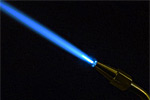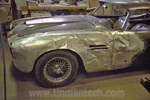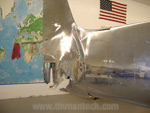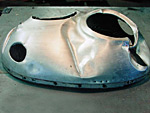The History of Automotive Aluminum Part 2
The History of Automotive Aluminum Part 2
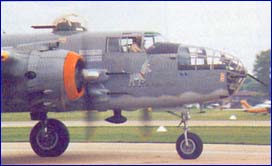
The B25 was one of many WW II-era aircraft to benefit from the use of aluminum body components. Note the air intake above the engine- a formed aluminum scoop which was butt-welded with an oxy-hydrogen torch and dressed off beautifully.
The Europeans in particular were very fond of aluminum and, during the 1920s and '30s, made quite artistic bodies using the material. After World War II, some of the most legendary aluminum bodied cars were produced by Ferrari, Aston, Porsche and Cobra for racing during the 1950s and '60s, before the cars evolved into fiberglass and bonded structure.
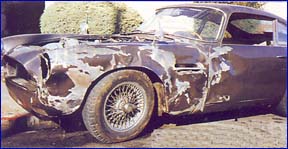
See Aston Martin DB4 repair slideshow
This 1961 Aston Martin DB4 had an unfortunate encounter about three years ago at an intersection in San Francisco. It sustained front body and suspension damage. The body is all aluminum. The vehicle came to White after it had been sold by the previous owner because he could not find a shop to repair the vehicle.
Two unexpected applications, in my experience as a restorer, were the cast aluminum bumpers on the BMW 501, 502 and 503 models of the early 1950s and the cast aluminum door frame in the Mercedes 3OOSL Roadster. But certainly, the beautiful limited production custom and racing coachwork of the 1930s draws our attention to the extremely fine art-metal work that reached its pinnacle during that period-all produced, incidentally, with oxy-fuel welding technology. In fact, for the first 40 years of auto production, there was no heliarc welding, and even stick and spot welding on aluminum was very limited. Even though the heliarc was invented in southern California in 1942, during that time automobile production was eclipsed by aircraft production. Therefore, the new welding method did not come into widespread use until after WWII. So, until the end of the war, aluminum aircraft, like automobiles, were torch welded, rivet or spot welded.

